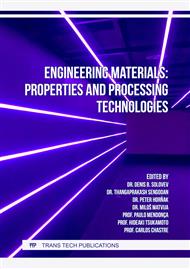[1]
Burden of disease from environmental noise Quantification of healthy life years lost in Europe. The WHO European Center for Environment and Health, 2011, p.108.
Google Scholar
[2]
Acceptable levels of noise, vibration and sound insulation requirements in residential and public buildings, TSN 23-315-2000 Moscow (MGSN 2.04-97). https://docs.cntd.ru/document/1200000486
Google Scholar
[3]
South San Francisco Municipal Code Chapter 8.32 NOISE REGULATIONS. https://qcode.us/codes/southsanfrancisco/view.php?topic=8-8_32&frames=on
Google Scholar
[4]
Portland, Oregon, City Code, Chapter 18.10 Maximum Permissible Sound Levels. https://www.portland.gov/code/18/10
Google Scholar
[5]
SP 51.13330.2011 PROTECTION AGAINST NOISE. https://docs.cntd.ru/document/ 1200084097
Google Scholar
[6]
Engineering ToolBox, 2001. https://www.engineeringtoolbox.com
Google Scholar
[7]
ISO 1996-1: 2016 Acoustics - Description, measurement and assessment of environmental noise, Part 1: Basic quantities and assessment procedures. https://www.iso.org/
Google Scholar
[8]
ISO 1996-2: 2017 Acoustics - Description, measurement and assessment of environmental noise, Part 2: Determination of sound pressure levels. https://www.iso.org/
Google Scholar
[9]
Silicone heel caps, https://zdorovyenogi.ru/silikonovye-nasadki-na-kabluk
Google Scholar
[10]
A.V. Ilyasova, O.A. Belitskaya, Research of the modern market of plastics used for 3D printing, Concepts, theory, methods of fundamental and applied scientific research in the field of inclusive design and technologies: a collection of scientific papers based on the results of the International Scientific and Practical Correspondence Conference (March 25-27, 2020), Part 1, M .: RSU im. A.N. Kosygin, 2020, pp.36-41.
Google Scholar
[11]
Samuel Clark Ligon, Robert Liska, Jürgen Stampfl, Matthias Gurr, and Rolf Mülhaupt, Polymers for 3D Printing and Customized Additive Manufacturing, Chemical Reviews. 117(15) (2017) 10212-10290. DOI: 10.1021 / acs.chemrev.7b00074
DOI: 10.1021/acs.chemrev.7b00074
Google Scholar
[12]
N. Shahrubudin, T.C. Lee, R. Ramlan, An Overview on 3D Printing Technology: Technological, Materials, and Applications, Procedia Manufacturing. Vol. 35 (2019) 1286-1296.
DOI: 10.1016/j.promfg.2019.06.089
Google Scholar
[13]
A.M.T. Syed, P.K. Elias, B. Amit, B. Susmita, O. Lisa, C. Charitidis, Additive manufacturing: scientific and technological challenges, market uptake and opportunities, Materials today. 1 (2017) 1-16.
Google Scholar
[14]
M.D. Ugur, B. Gharehpapagh, U. Yaman, M. Dolen, The role of additive manufacturing in the era of Industry 4.0, Procedia Manufacturing. 11 (2017) 545-554.
DOI: 10.1016/j.promfg.2017.07.148
Google Scholar
[15]
J.W. Stansbury, M.J. Idacavage, 3D Printing with polymers: Challenges among expanding options and opportunities, Dental Materials. 32 (2016) 54-64.
DOI: 10.1016/j.dental.2015.09.018
Google Scholar
[16]
V.V. Minets, O.A. Belitskaya, The use of additive technologies in the creation of collections of footwear and accessories, "Design and Technologies", no. 63 (105), Moscow: RGU. 137 (2018) 31-36.
Google Scholar
[17]
M.I. Alibekova, V.V. Kostyleva, A.N. Novikov, A.V. Firsov, Modern technologies in shoe design, "Design and Technologies", Moscow: RSU. 57(99) (2017) 31-35.
Google Scholar
[18]
Instrument-making company NTM-protection, Assistant Total (SIU V3RT), 2020. https://ntm.ru/products/87/7382
Google Scholar


